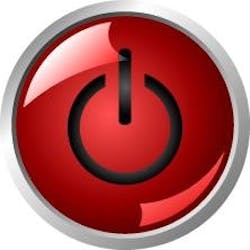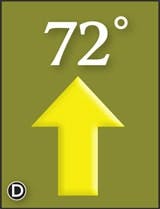How to Cut Energy Use and Get Paid for It
By Jana J. Madsen
When you're talking about demand-response (DR) programs, a penny saved really is a penny earned. Not only do you have smaller utility bills when you save energy, but if you're enrolled in a DR program, you actually earn money for curtailing load, too.
These programs are offered by utility companies, third-party aggregators that contract with utilities, and, in an unregulated energy market, Independent System Operators (ISOs). Participation is voluntary. Once enrolled in a DR program, you're required to curtail the energy load in your facility(s) when contacted by the program administrator, and you're compensated accordingly.
It's important to recognize the distinction between energy efficiency and DR. Installing energy-efficient HVAC equipment permanently reduces load; DR programs are temporary fixes, with a sudden reduction of energy usage for a defined duration.
DR programs are not new or uncommon. Contact your utility or the ISO in your state to inquire about the availability of such programs, and the eligibility of your building(s). In some situations, enrolling in a program offered by a regional or national aggregator might be your best - or only - option. These third parties sign up a number of companies/institutions and combine the load shedding, which is offered to the utility company.
The Benefits of EnrollmentBecause DR programs save energy, they relieve strain on the power grid and the need to build more fossil-fuel-burning plants. "Power plants, no matter how efficient they are, still have to burn natural resources," says Peter Chan, supervisor, demand response operations, Pacific Gas & Electric (PG&E) Co., San Francisco. Fewer carbon emissions are released, and electrical interruptions can be avoided.
These benefits are significant, but very seldom are they the reasons that facilities professionals take an interest in DR. For building owners and engineers, participation is a chance to lessen their facilities' impact on the environment, and a chance to transform building operations from a cost to a revenue stream. "Demand-response events will essentially coincide with high energy prices; so, by participating in DR [programs], contributors are, in fact, hedging their energy," says John Marhong, director, facility services, at Canadian horseracing entertainment company Woodbine Entertainment Group, Rexdale, ON.
There are three ways participants are rewarded for curtailing load:
-
The utility issues a credit on the ratepayer's bill on a monthly basis and/or following each event.
-
A check is issued from the aggregator to the participant following an event, based on the terms of the DR contract.
-
The utility offers reduced kilowatt-hour (kWh) rates for overall power.
When investigating DR programs, it's important to understand when and how you'll be compensated for participation. The financial justification for enrolling can be very attractive. For example, the University of Mississippi is rewarded by the Tennessee Valley Authority with reduced kWh rates that add up to $1 million in annual savings. Remember, though, not every utility or ISO offers reduced rates as an incentive to participate in a DR program. It's important to find out how the program is structured before signing a contract.
Different Types of Programs
There are two situations that trigger a DR event: when demand is high, and when prices are high. DR programs requiring load curtailment when the demand is so high that electricity supply is marginal are often called reliability programs. "Basically, we provide incentives for customers to curtail loads so we have enough [energy] to go around for everybody in the system," says Chan. By asking DR participants to curtail load when supply is low, utilities can ensure reliable delivery of power to all ratepayers, and don't have to buy power elsewhere.
The other program is called a pricing program. Participants enrolled in this type of program will be notified about load curtailment when the market price for energy is very steep. Enrollment in these kinds of DR programs can help facilities professionals proactively address pricing uncertainty. "We have hourly pricing in some states that is day-ahead; so, a day ahead, we'll give the price by hour, and the customer can set his/her operations accordingly," explains Ted Schultz, vice president of energy efficiency at Charlotte, NC-based Duke Energy.
With pricing programs called demand bidding, the program administrator gives you advance notice of the event, asks you to estimate the amount you can shed during a specific time, and pays you a certain rate for the load reduction. Some demand-bidding programs even enable facilities professionals to name their price for the energy they curtail. When investigating these types of programs, find out who's naming the price - you or the program administrator.
WHAT HAPPENS WHEN YOU PARTICIPATE IN A
DEMAND-RESPONSE PROGRAM ...
Hot weather causes low electricity supply at the power company.
The power company calls you, asking you to curtail load.
You receive the load-curtailment notification and activate the demand-response sequence in your building-automation system.
Temperature setpoints are raised.
Lights along the building perimeter are turned off.
You receive a credit on your energy bill the following month.
Questions to Ask Before You Enroll
When you enroll in a DR program, you sign a contract. But, before you put pen to paper, there are a number of questions you need answered to make an educated decision about the program that best suits your facility's capabilities and goals.
How will I be notified, and how far in advance will I be contacted? The terms of the contract will dictate how much advance notice you can expect. It could be 30 minutes, or it could be 24 hours. The program administrator will offer you a menu of options when it comes to notification methods: landline, fax, e-mail, text messaging, or cell phone. In addition to selecting the notification method, you can also choose who is (and how many people are) notified. As you investigate the load-curtailment strategy that's most practical, think about the time you'll need to set those actions in motion. Creighton University, Omaha, NE, receives a 3- or 4-hour notice from the Omaha Public Power District. In the time between when the call is received and curtailment begins, the school's facilities department sends e-mail and voicemail messages to faculty and staff to enlist their involvement. "The building engineers are also notified by two-way walkie-talkie, telephone, and through the Internet," says George Tangeman, energy manager, Creighton University. When curtailment requires the actions of numerous people in multiple facilities, like at Creighton, 30 minutes simply won't suffice.
How long will I have to shed load? "If, three or four times in one week, your utility is calling and [asking] you to drop load, that's tough," says Ed Saribay, supervisor, demand response operations, PG&E. Think about the number of days in a row you're willing to curtail load. If load shedding for too many consecutive days is a concern, ask the program administrator if you can say no to back-to-back requests or lengthy durations.
How frequently will I be contacted/required to curtail load? While it's expected that participants be contacted during periods of peak demand (often in the summer, when temperatures are high) or just before new rates take effect, no one would sign up for a DR program if he/she were called every week. Thankfully, you're not called every week. Ask the program administrator how often you can expect to be contacted.
What determines the amount I earn? You should know what variables impact the amount of your incentive for any program. For example, are you paid per kWh based on the amount of energy curtailed; if so, what determines this rate? Some programs give you a more significant incentive if you agree to shed load with less advance notice, so ask. Also, investigate whether you're paid per event, or if there's a monthly incentive for simply enrolling. According to Duke Energy's Schultz: "We'll pay them for the right to curtail load, and when they do, they get a premium.
"If I don't shed load, what are the penalties? Irrespective of the type of program in which you enroll, you should always ask whether you'll be issued a penalty fee for not curtailing load when contacted. In other words, after your voluntary enrollment in a DR program, is curtailment required, or can you elect to "pass" when notified? "We have programs where we've paid [the ratepayer] to be a resource; so, when we call, we're planning on [the load curtailment] being there. We also have programs that are voluntary," says Schultz. If the program requires mandatory load shed and participants don't take action, penalties can be steep. "[Participants] would pay market price plus 15 percent, typically," Schultz says.
What is the length of the contract? Most contracts are for 12 months, but longer terms, even 3- to 5-year contracts, are not unheard of.
How to Shed Load
If you're lucky enough to have seasoned building engineers, determining where to curtail load starts with asking them for their suggestions. When Chicago-based U.S. Equities Asset Management LLC enrolled in a DR program as part of its green initiatives at Sears Tower, it called on in-house expertise to identify load-shedding opportunities. "We're really lucky to have great engineers, some of whom have been with the building since it was built," says Randy Stancik, vice president, U.S. Equities Asset Management.
If you're not quite so fortunate, or you want some outside help, talk to your program administrator. Many can conduct a comprehensive energy audit to help you identify where and how to curtail load. "During the audit, we will look at a customer's operations behavior and his/her [facility's] energy consumption," says Chan. "From this information, our energy auditor will recommend what the building needs to do in order to permanently reduce load under the energy-conservation program, and what other things the building can do to curtail if they sign up for a demand-response program."
All load-curtailment actions must cut energy without crippling business continuity and diminishing the comfort and productivity of building occupants. There are two strategies that, applied together or separately, can be used to temporarily reduce load: using on-site power generation, and/or operating building systems and equipment in such a way that they use less energy.
While using back-up generators is not considered the most respected way to curtail load, it allows you to continue operations during a DR event as if nothing were happening. For a hospital, where patients would suffer if temperature setpoints were raised in the summer, this is a practical approach to reducing the amount of energy the facility draws from the power grid. "If you have alternative sources of generation, then that gives you the ability to maintain your productivity during an event," explains Schultz. At the University of Mississippi, 10 diesel generators can crank out a maximum generation capacity of 20 megawatts - enough to power the whole campus for 3 to 4 days. If you choose to use this strategy, though, don't rule out reducing load as well. Marriott Intl. combines on-site generation and operational changes to shed 2,400 kW during periods of peak demand at seven of its California hotels.
"Generators are an expensive way of making electricity," says Lennis Pederson, associate vice president for administration, Creighton University, about why the school opted for "pure" curtailment. Like many organizations enrolled in a DR program, the university relies on its building-automation system (BAS) to help cut energy. While it's not a necessity, a BAS can mean the difference between having facilities professionals scour the building, flipping lights off manually, and typing in a few keystrokes in a network operating center to automate dimming.
Not surprisingly, HVAC and lighting systems are the most frequent areas targeted for load shedding. Many businesses - from grocery-store chain Albertsons to toy-store icon FAO Schwarz - are shutting down or dimming lights as part of their load-curtailment strategies. And, at Sears Tower, strategies like shutting off nonessential exhaust fans and lowering the temperature of domestic hot water are being applied. The cumulative impact of these actions results in fewer kilowatts, a smaller environmental impact, and a better bottom line. The utility company wins, the environment benefits, and you can finally turn your energy expense into an asset.
Jana J. Madsen ([email protected]) is editor at Buildings magazine.






